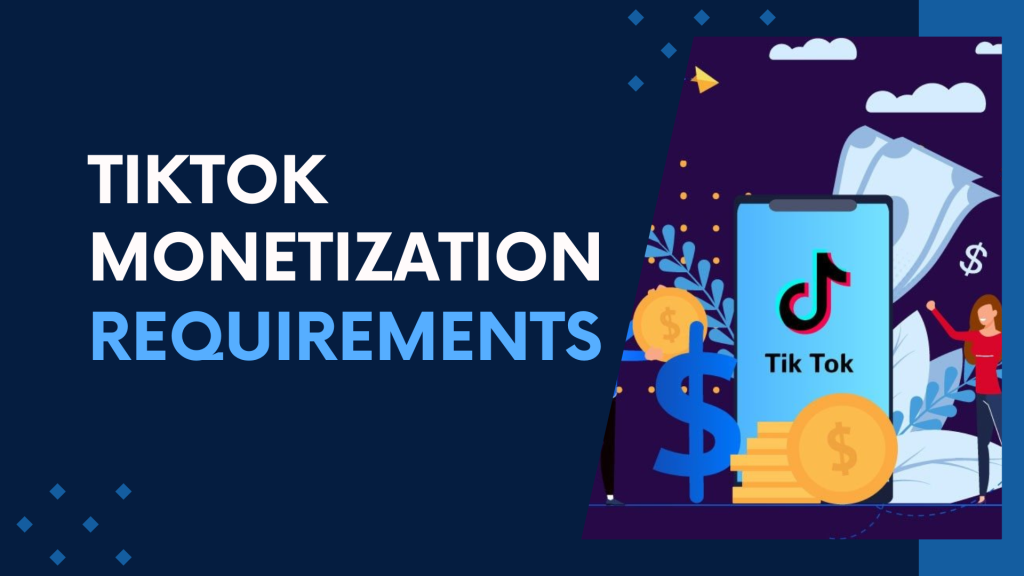TikTok has a Creator Fund program that allows eligible content creators to earn money by monetizing their TikTok accounts. To be eligible for this program, creators must meet specific criteria set by TikTok. These criteria usually include having a certain number of followers, a defined number of video views within a specified period, and adhering to TikTok’s community guidelines.
How to Qualify for TikTok Monetization?
To qualify for the TikTok Creator Fund, users typically need to meet minimum requirements set by TikTok, which often include having over 10,000 followers and accumulating a certain number of views on their videos within a given period. Additionally, creators must have a valid TikTok account adhering to the platform’s guidelines and terms of service.
Insights into TikTok Earnings in the United States
Understanding the landscape of TikTok earnings in the United States involves delving deeper into the dynamics that drive monetization for content creators on the platform.
- Creator Program and Monetization Policies:
TikTok offers several avenues for creators to earn money, primarily through the TikTok Creator Fund and through brand partnerships. The Creator Fund allows creators to earn a share of revenue based on views and engagement, whereas brand partnerships involve collaborations with advertisers or brands for sponsored content.
- Creator Fund Payouts:
TikTok distributes funds to eligible creators based on views, engagement, and the geographical location of the audience. The exact payout rates can vary, and the Creator Fund has specific criteria and guidelines for eligibility.
- Influencer Marketing and Brand Collaborations:
Influencer marketing is a significant source of revenue for TikTok creators. Brands collaborate with influencers to promote products or services, leveraging their audience reach and engagement. Earnings from such collaborations often depend on the creator’s reach, engagement metrics, and the specific terms of the partnership.
- Ad Revenue and Campaigns:
TikTok also generates revenue through advertising. Advertisers run campaigns on the platform, paying TikTok for ad space. Creators with higher engagement rates and audiences matching the advertiser’s target demographics can earn a share of ad revenue from their videos.
- Audience and Engagement Impact:
The audience’s location, demographics, and engagement metrics influence earnings. Advertisers often prefer content that resonates with specific demographics, impacting the rates creators earn for their content.
- Ad Formats and Performance:
Different ad formats, such as in-feed ads, branded hashtags, and branded effects, offer various revenue potentials. Creators whose content aligns with these ad formats and performs well can expect higher earnings.
- Consistency and Quality:
Consistently posting high-quality content and engaging with the audience is crucial. Creators who maintain a consistent posting schedule and focus on content quality tend to build more engaged followings, which can translate into better earning potential.
- TikTok’s Monetization Strategies:
TikTok continuously evolves its monetization strategies, introducing new features, programs, and advertising opportunities that impact creators’ earnings. Staying updated with TikTok’s policies and updates is essential for maximizing earning potential.
Understanding these facets can empower TikTok creators to strategize effectively, optimize their content, engage their audience, and explore various monetization opportunities on the platform.
Factors Influencing Monetization Rates – TikTok Monetization Requirements
The monetization rates on TikTok can vary widely due to several factors that influence how much creators earn for every 1,000 views. Here are some key elements that play a crucial role in determining these rates:
- Engagement Metrics: Higher engagement on TikTok, such as likes, comments, shares, and follower interaction, tends to attract better monetization rates. Advertisers often look for accounts with engaged audiences to ensure their content reaches a broader audience.
- Audience Demographics: The demographic makeup of your audience significantly impacts the rates. Advertisers might value specific demographics more than others. For instance, an audience within a certain age group or geographic location might be more appealing to particular brands.
- Content Niche: The content niche or category you create for also affects monetization rates. Some niches attract more advertising interest than others. For instance, lifestyle, fashion, and entertainment-related content often draw higher advertising revenue due to their broad appeal.
- Video Length and Quality: Longer videos typically offer more ad space, potentially leading to higher earnings. Additionally, high-quality content that captivates viewers and encourages longer watch times can positively impact monetization rates.
- Ad Type and Campaigns: Different types of ads offer varying rates. For example, brand partnerships or sponsored content tend to offer better rates than generic advertisements. Additionally, participating in specific ad campaigns or trends might affect earnings.
- Creator’s Location: While the audience’s location matters, the creator’s location can also influence earnings due to differing advertising costs and market demands across regions.
- Monetization Policies: TikTok’s own monetization policies, including changes in algorithms or program structures for creators, can directly impact earnings.
- Consistency and Frequency: Regularly posting high-quality content and maintaining audience engagement can build a loyal following, potentially improving monetization rates over time.
Strategies to Meet TikTok Monetization Requirements
Increasing monetization rates on TikTok involves a mix of strategies. Creators can focus on creating engaging, high-quality content that resonates with their audience. They can also aim to grow their follower base, leverage trending hashtags, collaborate with other creators, and actively engage with their audience to boost visibility and appeal to advertisers.
TikTok offers an opportunity for content creators to monetize their accounts through the Creator Fund, but achieving significant earnings requires meeting specific eligibility criteria and implementing effective strategies to grow an engaged audience. While the average monetization rates per 1,000 views in the United States vary, creators can enhance their earning potential by producing compelling content and building an active and loyal following.
